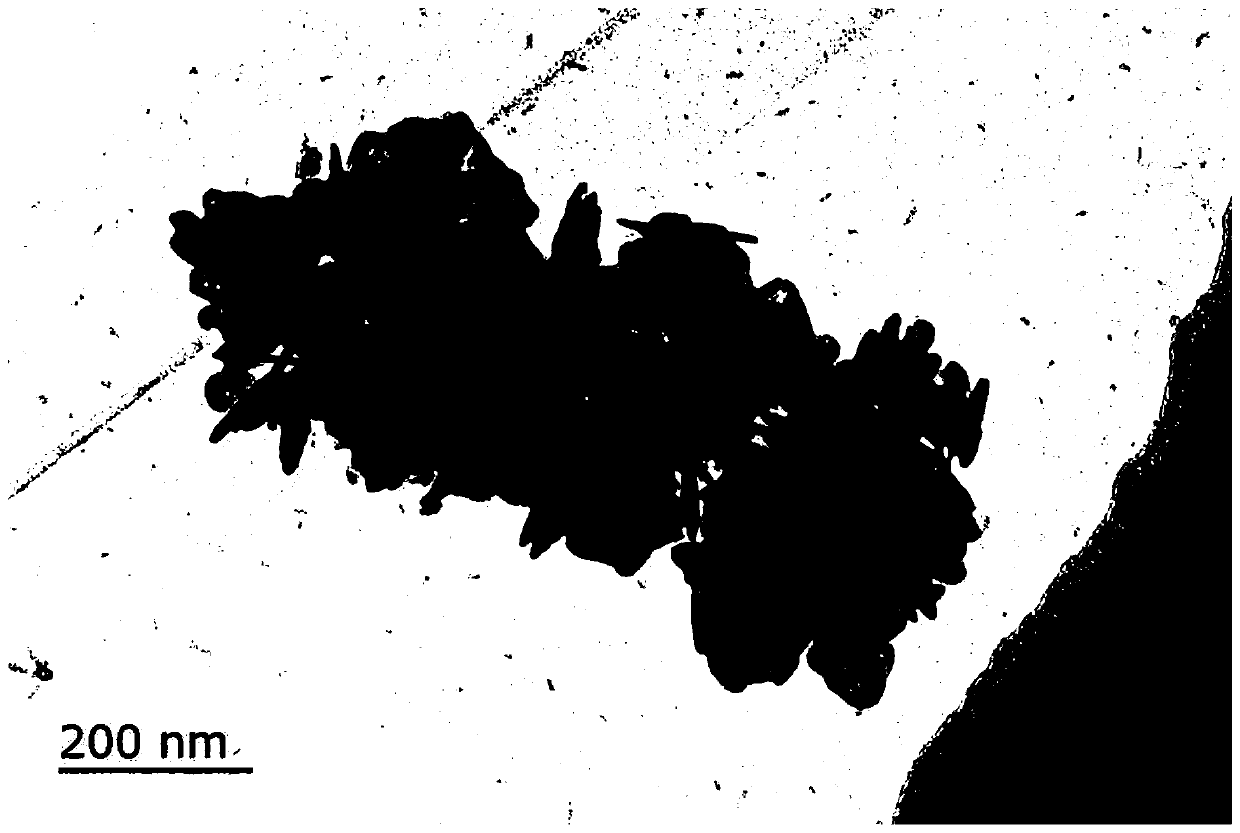Method for rapidly preparing BiOBr nanoflowers with assistance of water and application of BiOBr nanoflowers
A nano-flower, water-assisted technology, applied in the field of nano-materials, can solve problems such as unfavorable enlarged production, cumbersome post-processing, complicated process, etc., and achieve excellent visible light catalytic degradation of industrial dyes and antibiotics performance, short hydrolysis time, and simplified preparation process. Effect
- Summary
- Abstract
- Description
- Claims
- Application Information
AI Technical Summary
Problems solved by technology
Method used
Image
Examples
Embodiment 1
[0026] Example 1: The water-assisted rapid preparation of BiOBr nanoflowers in this example is carried out through the following steps:
[0027] Step 1. Add 2mmol of bismuth nitrate pentahydrate to 32mL of ethylene glycol and stir for 0.5h, then add 2mmolHBr, stir thoroughly for 0.5h, then transfer to a high pressure reactor with polytetrafluoroethylene lining, and react at 200℃ for 0.5h. Cool at room temperature to obtain a clear solution;
[0028] Step 2. Then add 32 mL of water and immediately appear a white solid precipitate. The solid is separated by suction filtration, washed with water and absolute ethanol 3 times respectively, and dried at 60° C. to obtain BiOBr nanoflowers.
[0029] figure 1 X-ray powder diffraction test pattern of BiOBr nanoflower. It can be seen from the figure that the X-ray derived peak of the prepared solid powder is completely consistent with the standard card JCPDS: 09-0393, indicating that the obtained solid powder is pure BiOBr crystals. figure 2 ...
Embodiment 2
[0030] Example 2: The water-assisted rapid preparation of BiOBr nanoflowers in this example is carried out through the following steps:
[0031] Step 1. Add 2mmol of bismuth nitrate pentahydrate to 8mL of ethylene glycol and stir for 1h, then add 2mmol HBr, stir well for 1h, then transfer to a high pressure reactor with polytetrafluoroethylene lining, react at 120℃ for 2h, cool at room temperature Get a clear solution;
[0032] Step 2: Then add 4 mL of water and immediately appear a white solid precipitate. The solid is separated by suction filtration, washed with water and absolute ethanol 3 times, and dried at 80°C to obtain BiOBr nanoflowers.
Embodiment 3
[0033] Example 3: In this example, the water-assisted method for rapidly preparing BiOBr nanoflowers is carried out through the following steps:
[0034] Step 1. Add 2mmol of bismuth nitrate pentahydrate to 64mL of methanol and stir for 1h, then add 2mmol of NaBr, stir thoroughly for 0.5h, then transfer to an autoclave with polytetrafluoroethylene lining, react at 140℃ for 1h, and cool at room temperature. Clear solution
[0035] Step 2. Then add 128 mL of water and immediately appear a white solid precipitate. The solid is separated by suction filtration, washed with water and absolute ethanol 3 times respectively, and dried at 50°C to obtain BiOBr nanoflowers.
PUM
 Login to View More
Login to View More Abstract
Description
Claims
Application Information
 Login to View More
Login to View More - R&D
- Intellectual Property
- Life Sciences
- Materials
- Tech Scout
- Unparalleled Data Quality
- Higher Quality Content
- 60% Fewer Hallucinations
Browse by: Latest US Patents, China's latest patents, Technical Efficacy Thesaurus, Application Domain, Technology Topic, Popular Technical Reports.
© 2025 PatSnap. All rights reserved.Legal|Privacy policy|Modern Slavery Act Transparency Statement|Sitemap|About US| Contact US: help@patsnap.com



